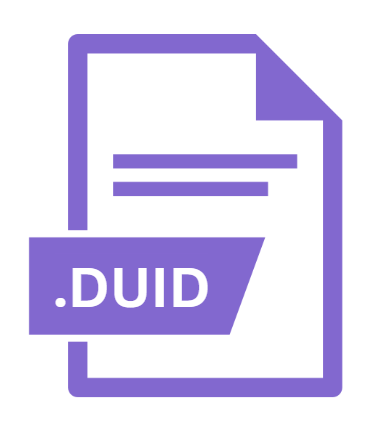.DUID File Extension

DHCPv6 Unique Identifier
| Developer | Internet Engineering Task Force |
| Popularity | |
| Category | Misc Files |
| Format | .DUID |
| Cross Platform | Update Soon |
What is an DUID file?
The .DUID file extension represents a file format used in the context of DHCPv6 (Dynamic Host Configuration Protocol for IPv6).
These files store DHCPv6 Unique Identifiers (DUIDs), which are essential for network configuration and management in IPv6 environments.
DUIDs serve as a key component in identifying network devices and ensuring they receive the correct configuration parameters from DHCP servers.
Understanding the .DUID file format, its origin, history, and technical specifications can provide valuable insight into its role in network management and troubleshooting.
More Information.
The initial purpose of the DUID file and the DHCPv6 protocol was to improve network configuration and management in IPv6 environments.
Before the advent of DHCPv6, IPv4 networks used DHCP for assigning IP addresses and configuration parameters to devices.
As IPv6 began to replace IPv4, a new mechanism was needed to accommodate the larger address space and different addressing schemes.
The DUID was introduced as part of RFC 3315, which defines the DHCPv6 protocol. This RFC specified that the DUID should be used to uniquely identify DHCP clients and servers, facilitating consistent and accurate network configuration.
The DUID provides a way to distinguish between different devices and ensure that configuration information is correctly assigned, regardless of device reboots or network changes.
Origin Of This File.
The .DUID file extension is directly associated with the DHCPv6 protocol, which was developed by the Internet Engineering Task Force (IETF) as part of the IPv6 suite of protocols.
DHCPv6 is an evolution of the original DHCP protocol designed to cater to the needs of IPv6 networks. The DUID was introduced to uniquely identify DHCP clients and servers within an IPv6 network, replacing the hardware-based identifiers used in IPv4.
File Structure Technical Specification.
The .DUID file format is not standardized for general use outside of specific DHCPv6 implementations, so its structure can vary depending on the software or system generating it.
The general technical specifications for DUIDs are defined by RFC 3315. The key components of a DUID are:
- DUID Type: Specifies the type of DUID. There are several types, including DUID-LLT (Link-layer address plus time), DUID-EN (Enterprise Number), and DUID-LL (Link-layer address). Each type has a different format and purpose.
- Hardware Type: For DUID-LLT, this field specifies the hardware type used for the link-layer address.
- Link-layer Address: The unique identifier associated with the hardware address of the device. This is used to differentiate between devices at the link layer.
- Timestamp: For DUID-LLT, this field contains a timestamp indicating when the DUID was created.
- Enterprise Number: For DUID-EN, this field contains the enterprise number assigned to the organization by the IANA (Internet Assigned Numbers Authority).
The file may also include additional metadata or configuration details depending on the DHCPv6 implementation. In practice, the DUID is often stored in binary format to ensure compactness and efficiency in network communications.
How to Convert the File?
Converting .DUID files is not typically necessary or common practice, as they are specifically designed for use with DHCPv6 and are not intended for general-purpose file formats.
If conversion is needed for compatibility or analysis purposes, it would generally involve translating the binary data into a human-readable format or extracting relevant information for use with other tools or systems.
- Binary to Text Conversion: Tools or scripts can be used to convert binary DUID data into a hexadecimal or textual representation for easier analysis. This conversion process involves interpreting the binary data according to the DUID format specifications.
- Hex Editors: For detailed analysis or modification of DUID files, hex editors can be used to view and edit the raw binary data. This approach requires a thorough understanding of the DUID format and structure.
- Custom Scripts: Custom scripts or programs may be developed to extract specific fields or convert DUID data into a different format based on the needs of the network administrator or system integrator.
Advantages And Disadvantages.
Advantages:
- Unique Identification: DUIDs provide a unique identifier for devices, ensuring that each device can be accurately identified and configured by DHCPv6 servers.
- Persistence: DUIDs are designed to persist across reboots and network changes, which helps maintain consistent configuration settings for devices.
- Flexibility: Different DUID types offer flexibility in how devices are identified, accommodating various network configurations and requirements.
Disadvantages:
- Complexity: The DUID file format and its associated identifiers can be complex to understand and manage, particularly for network administrators who are not familiar with DHCPv6.
- Compatibility: Not all systems and software handle DUIDs consistently, which can lead to compatibility issues in heterogeneous network environments.
- Security Concerns: As with any unique identifier, DUIDs can potentially be used for malicious purposes if not properly secured, especially in large or open networks.
How to Open DUID?
Open In Windows
- Hex Editors: Use hex editors such as HxD or Hex Fiend to view and edit the binary content of .DUID files.
- DHCP Tools: Some network management tools that support DHCPv6 may also provide functionality for managing or viewing DUIDs.
Open In Linux
- Hex Editors: Tools like
hexeditorxxdcan be used to view and modify .DUID files. - Network Utilities: DHCP management utilities and network configuration tools that support DHCPv6 may also be able to handle DUID files.
Open In MAC
- Hex Editors: Hex Fiend is a popular choice for viewing and editing binary files on macOS.
- Terminal: For advanced users, the
hexdumpcommand in the Terminal can be used to view the binary content of .DUID files.











